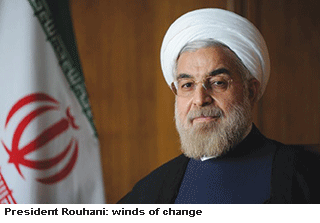 “AT LEAST one thing hasn’t changed”, remarks a Tehran University professor who recently returned to work after several years. “The faculty still gossips terribly.” But under President Hassan Rouhani, bigger changes on Iran’s leading campus — and perhaps in universities elsewhere — may also be in the offing.
“AT LEAST one thing hasn’t changed”, remarks a Tehran University professor who recently returned to work after several years. “The faculty still gossips terribly.” But under President Hassan Rouhani, bigger changes on Iran’s leading campus — and perhaps in universities elsewhere — may also be in the offing.
One sign of this was the recent sacking of Tehran University’s conservative chancellor. Appointed in 2008 by Rouhani’s populist predecessor, Mahmoud Ahmadinejad, he had overseen the expulsion of independent-minded students and academics, promoting mediocre yes-men and stifling the intellectual atmosphere.
Since his departure, things have loosened up. In April, over 1,000 students gathered to hear a lecture by Immanuel Wallerstein, an 83-year-old, left-wing American sociologist. Widely translated into Persian, he is respected across Iran’s intellectual spectrum, albeit under various interpretations. For some, he is a herald of America’s decline, affirming Iran’s official narrative. For others, he still represents America, even if he challenges the global status quo.
In the early years of this century, under the presidency of Muhammad Khatami, Western intellectuals visited quite often. Under Ahmadinejad, they stopped coming. But since Rouhani was elected last summer, intellectual waters are being tested again. Hosted by the Iranian Sociological Association, Wallerstein’s lecture tour included two other notable universities, at Shiraz and Isfahan.
Many students didn’t know who he was, but wanted to hear an American scholar anyway. When he observed that third-world regimes born out of revolution tended to create the same social and economic problems their founders had promised to solve, a frisson rippled through the assembly. At the back of the hall, where students craned their necks to see him, whistles and applause erupted.
(Excerpted and adapted from Times Higher Education)